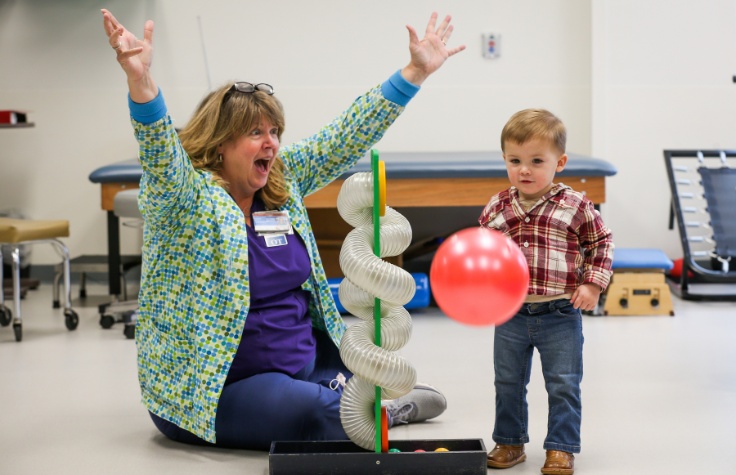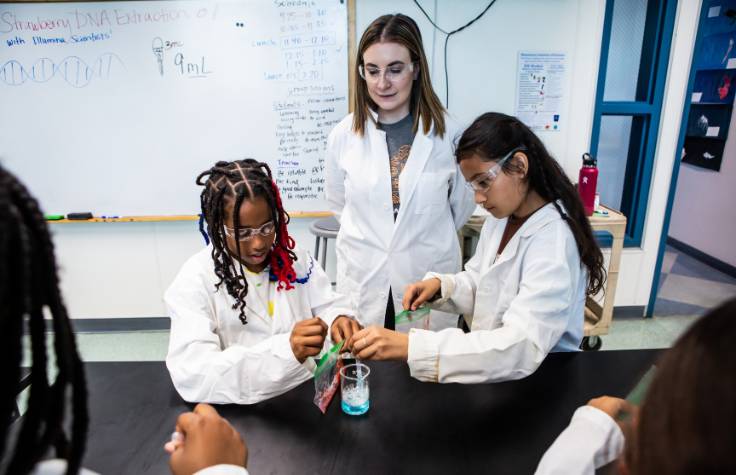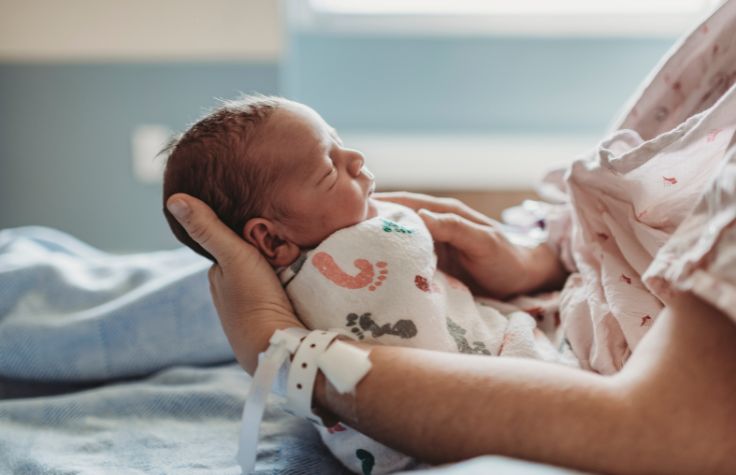
November 3, 2023
Genomics has enabled great advances in precision medicine for oncology, infectious diseases, and rare diseases. Researchers at Shriners Children’s, a nonprofit health care institution founded in 1922, have recognized that even more can be accomplished, and they’re pushing the boundaries of genomics into new clinical frontiers.
In 2019, they launched the Shriners Children’s Genomics Institute with the vision of discovering genetic insights to improve personalized care. The founder of the institute, Vice President of Research Programs Marc Lalande, PhD, says it will address conditions that aren’t thought of as genetic disorders or as having a strong origin in genetics—but that still have genetic implications.
Shriners Children’s largest patient population is children diagnosed with scoliosis, an abnormal curvature of the spine that often requires surgery and years of physical therapy. The health care system sees about 13,000 people per year at its clinics in Philadelphia, Chicago, Sacramento, and other locations across North America. Most cases of scoliosis are idiopathic, meaning their cause is unknown. However, Lalande says: “We think genetics plays a role in at least a fraction of the cases. If you sequence patients and get family data, you start seeing in our studies that no, they’re not all idiopathic. There is a genetic component, but teasing that out is going to be challenging.” Today, the standard of care for people with scoliosis does not include genetic testing of any kind.
The team at Shriners Children’s is collecting thousands of DNA samples from families who have one or more children with scoliosis and/or related conditions for whole-genome sequencing. In order to take on projects of this magnitude, they’ve commissioned Illumina’s high-capacity NovaSeq X Plus Sequencing System. “We know the NovaSeq X is faster and is going to cost less per genome, which is extremely important if you’re doing a lot of genomes,” Lalande says. “And it encourages us to take on more projects because we know we’re not going to have a bottleneck.” Using the NovaSeq X Plus, they can run 160 genomes in two days, a much higher throughput than what they were able to achieve with the NovaSeq 6000, and at a lower cost.
Shriners Children’s researchers pride themselves on leading projects focusing on complex disorders that involve many genes, which are even more challenging to untangle than single-gene conditions. “We’ve strictly used the Illumina informatics pipeline to identify these variants,” Lalande explains. By combining the raw base calls output of the NovaSeq X Plus with the Illumina DRAGEN Secondary Analysis platform, the Shriners Children’s team can quickly get high-accuracy genome-wide calls for multiple different variant types directly from the instrument. “Some of the preliminary analysis is already done in the machine, which is huge.”
The team then uses Emedgene explainable AI to prioritize candidates. This machine-learning- based system developed by Illumina scientists narrows down the list of candidate variants in a genome from over 4 million to a few dozen based on the variant’s properties and the clinical signs and symptoms observed in the subject. Unlike many AI algorithms, Emedgene shows its work by drawing a knowledge graph of how and why the variant has been flagged as high priority. The selected candidates are then shared with collaborators at SickKids in Toronto, who further explore the biology of the genes and variants involved by re-creating them in a model organism (zebra fish). Shriners Children’s goal in the next few years is to prove the concept of this approach by verifying a group of variants identified by WGS in children with scoliosis as having an impact on vertebral development when similar changes are introduced into the animal model. Eventually, they aim to develop these methods further to potentially generate new therapies and explore molecular pathways that could be manipulated to help manage or even alleviate severe scoliosis cases.

Insights in cerebral palsy
Children with cerebral palsy comprise Shriners Children’s second-biggest patient population—more than 6000 patients per year—and Lalande says that while they’re always looking to increase their sample size, their researchers are already analyzing data and finding interesting variants: “Some of these disease-associated variants in cerebral palsy, we think, are going to be actionable.”
A recent meta-analysis found that nearly one in three people with cerebral palsy have an identifiable genetic predisposition. And as with scoliosis, most patients with this condition do not currently receive genetic testing, so they can’t benefit from the changes in medical management and improved understanding of prognosis that come with a molecular diagnosis. The prenatal environment also plays a large role in this condition; if two individual fetuses are exposed to the same causal factor in utero, one may have a predisposition and have severe cerebral palsy, while the other may have a much less severe case or no symptoms at all. This kind of information, Lalande says, would have implications for expectant families seeking to plan a healthy pregnancy and delivery.
Toward a global patient population
Shriners Children’s, which has cared for more than 1.5 million children since its founding 101 years ago, is expanding its global reach. It has locations throughout the US as well as in Montreal and in Mexico City, Tijuana, and Monterrey, Mexico; and it conducts international outreach clinics supporting its vision to provide high-quality care to more kids in more places, closer to their homes.
Collecting and sequencing international samples is important for confirming that a variant is associated with a disease and is not just population specific. “I also think it’s important socially to involve patients from other cultures to give them the opportunity to participate in this research, and to feel that they’re contributing to the global effort,” Lalande says.
All of the institute’s studies fall under one system-wide initiative, Shriners Children’s Precision Medicine and Genomics. Each research project or trial involves multiple Shriners Children's locations and requires coordination among as many as eight physicians or surgeons based in several time zones. “Instead of having siloed research around our system, it’s proven extremely important to have a platform that brings people together,” Lalande says.
A voyage of discovery
Considering the scale and scope of Shriners Children’s ambitious research, the team is looking forward to making great leaps with the NovaSeq X Plus.
“It’s exciting,” Lalande says. “First of all, any advance in technology that’s going to make things more cost efficient is important. We’re extremely fortunate to have the Shriners’ philanthropy supporting our entire genomics effort.”
As always, Lalande brings the focus back to the children.
“How do we get from a saliva sample of DNA and move it all the way to impacting our kids? I can’t give you a timeline, but that’s our path,” he says. The next step is transitioning to a clinical lab. They are currently seeking board approval and CLIA lab certification. Meanwhile, they’ll continue to focus on research. “In the short term, we want to find the variants that are associated with each disease. Right now, it’s a voyage of discovery.”
To hear from Shriners Genomics Institute Director Kamran Shazand in a November 7 webinar entitled Scaling a Clinical Sequencing Workflow for Rare Disease Research at Shriners Hospitals for Children, click here.


